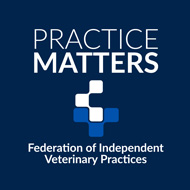Humans pass more viruses to animals, study finds
Researchers analysed nearly 12 million viral genomes.
A study has revealed that more viral infections are anthroponotic, meaning that they are transferred from humans to domestic and wild animals, than are zoonotic.
An analysis of viral genome sequences demonstrated that roughly twice as many infections involved human-animal transmission than animal-human.
With many epidemic and pandemics, such as Ebola and Covid-19, resulting from zoonotic transmission, these diseases have often taken precedence as a threat to public health. This has led to humans being considered a sink for viruses, rather than a source.
To compare the amount of zoonotic and anthroponotic diseases, researchers from University College London (UCL) developed methodological tools that would enable them to analyse nearly 12 million viral genomes that were deposited on public databases.
This meant that they could reconstruct evolutionary histories and past host jumps of viruses across 32 viral families, considering which genomes developed mutations during host jumps. This would allow them to quantify where viruses occurred from animal-human, human-animal or animal-animal transmission.
The results highlighted a prevalence of human-animal transmissions, consistent across most viral families. It also discovered even more animal-animal transmissions, not involving humans.
Findings showed that viral host jumps were often related to an increase in genetic changes, or mutations, in the viruses, relative to their continued evolution alongside a host animal.
Viruses with broader host ranges showed weaker signs of adaptation, which suggested that they were inherently more capable of infecting a range of hosts. Other viruses may require more extensive adaptation to infect a new host species.
Prof Francois Balloux, a co-author of the study from the UCL Genetics Institute, said: "We should consider humans just as one node in a vast network of hosts endlessly exchanging pathogens, rather than a sink for zoonotic bugs.
"By surveying and monitoring transmission of viruses between animals and humans, in either direction, we can better understand viral evolution and hopefully be more prepared for future outbreaks and epidemics of novel illnesses, while also aiding conservation efforts.”
The full study can be found in the journal Nature Ecology & Evolution.
Image © Shutterstock



 The Federation of Independent Veterinary Practices (FIVP) has announced that its podcast, FIVP Practice Matters, will be returning for a second series next year.
The Federation of Independent Veterinary Practices (FIVP) has announced that its podcast, FIVP Practice Matters, will be returning for a second series next year.